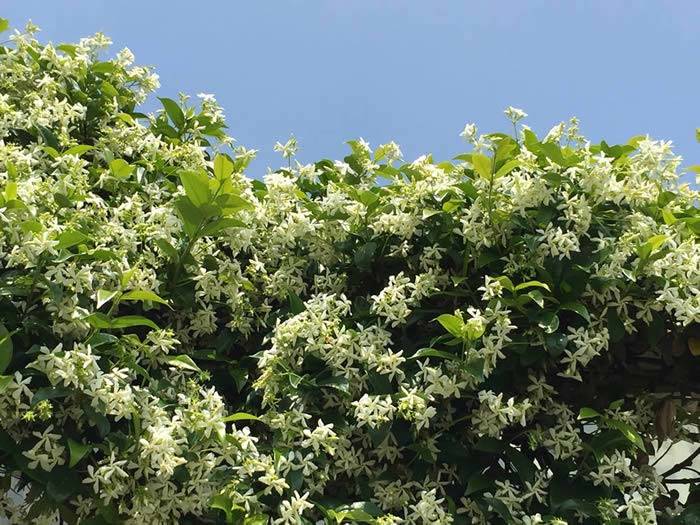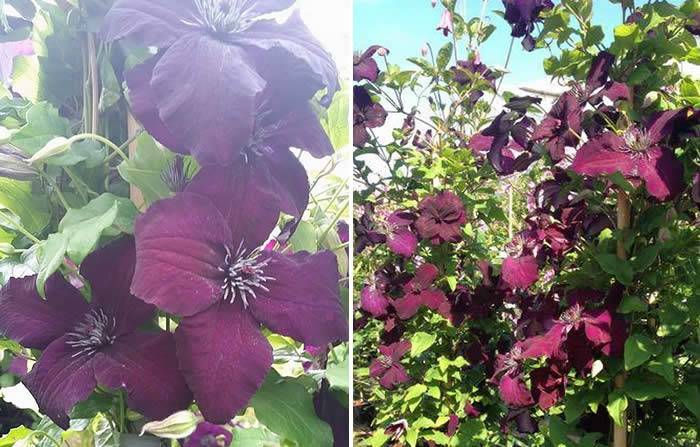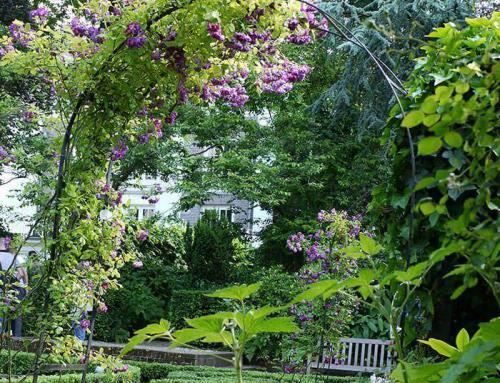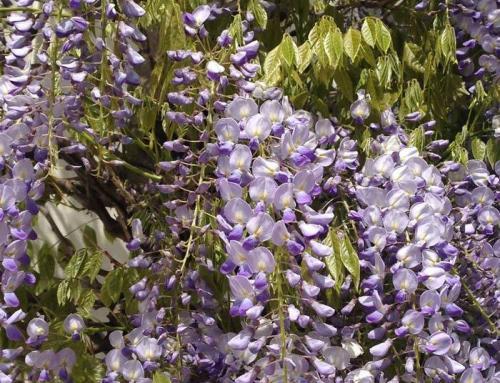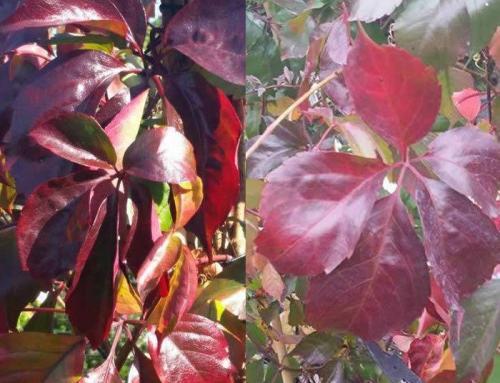Climbers are the original vertical garden. They create a wall of green in a most space-efficient manner and generally don’t require much maintenance. Climbers will happily grow against fences and walls, along trellises, over buildings as well as enhancing other supporting plants and trees. They will disguise boundaries and embellish hedges. With a little structural help (such as from a pergola), more showy climbers such as Wisteria Sinensis or Clematis Dark Eyes create a stunning garden focal point. From a garden design perspective, whatever structure they climb, climbing plants will add an extra dimension of verdant height as they grow. This will have the effect of drawing the eye upwards to new (and possibly previously unexploited) horizons.
Climbing Over Structures
Climbers can be extremely useful at disguising ugly brickwork, sheds or garages. In fact, climbers will conceal most structures one might find in the garden be they manmade or natural. Evergreen climbers are best for this use, creating a canopy of foliage without too much fuss. We suggest the variegated ivy Hedera Algeriensis Gloire de Marengo for structures that are best hidden from view or simply softened to please the eye.
Climbers as a Focal Point
The more showy climbers such as climbing roses and clematis with their eye-catching flowers can be reserved for use as a focal point in the garden. This works particularly well where the garden does not have an existing canopy of large vertical trees. Cost effectively, arches and pergolas can be used to create frameworks for a green vertical focal point in the garden as well as providing nice leafy spots of shade. Among the more showy or decorative climbers in our collection are Clematis Dark Eyes and Clematis Fukuzono. Both of these stunning clematis plants are summer-flowering and should continue until well into September.
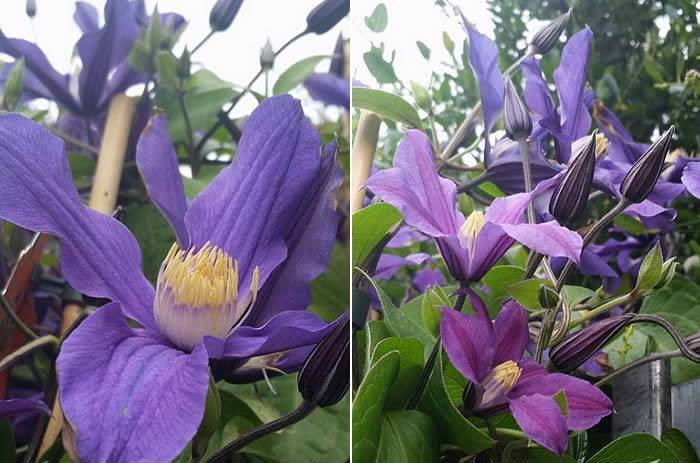
Clematis Fukuzono – in flower all summer long
Seating areas in the garden can be magically enhanced by using a backdrop of scented climbers such as jasmine. We suggest the heavenly scented Trachelospermum Jasminoides Star of Toscana Selbra with its gorgeous yellow blooms.
If you have a do have mature trees in your garden, don’t forget that climbers will merrily scramble up tree trunks, adding a most attractive floral dimension. For example, this Rosa Banksiae Alba (just getting started, planted earlier this year) on a 200 year old London Plane tree.
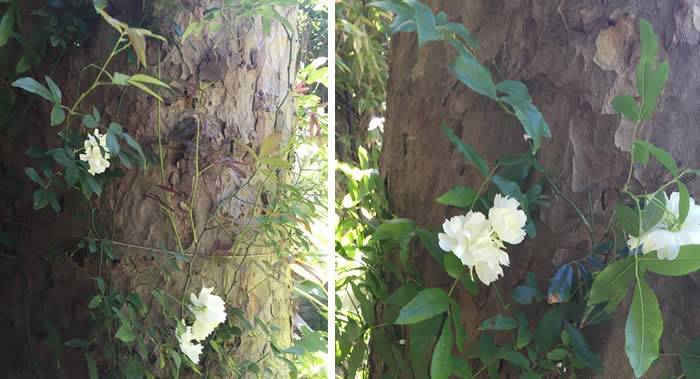
Climbing Rose – Rosa Banksiae Alba
Aspect
Most climbers prefer to have their roots in shade, such as in the cool, protected environment beneath trees and shrubs. Use a cane or bamboo to train young climbers in the intended direction. If you do need a climber for shade, we highly recommend Hydrangea Petiolaris which will thrive even on a North facing wall.

